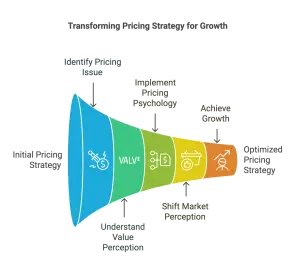As a personal productivity and business growth expert, I have come across numerous individuals struggling to manage their time effectively. With the fast-paced lifestyle and the constant pressure to meet deadlines, it can be challenging to balance work, personal life, and still achieve our goals. This is where time management exercises come into play. These activities help individuals gain control over their time, prioritize tasks, and achieve optimal productivity. In this article, I will discuss the different types of time management exercises, their benefits, and how to incorporate them into your daily routine.
Key Takeaways
- Time management exercises can lead to improved productivity, better time management skills, effective communication, enhanced problem-solving skills, and reduced stress levels.
- Incorporating time management exercises into your daily routine can be done by setting a time limit, using hourly blocks, and taking regular breaks.
- Effective time management exercises require setting a goal in mind, prioritizing tasks, and avoiding non-productive activities.
Introduction
Time management exercises are essential for individuals seeking personal growth and increased productivity in their professional lives. These exercises help individuals develop time management skills, improve their performance, and reduce stress levels. They also contribute to better communication and problem-solving skills, crucial for success in any field.
There are various types of time management exercises that individuals and organizations can incorporate into their daily activities. We will cover three of my favorites below.
To incorporate time management exercises into your daily routine, you can follow these tips:
- Set a Time Limit: Assign a specific time frame to each task to ensure you complete it within the allotted time.
- Use Hourly Blocks: Divide your day into hourly blocks and assign tasks to each block. This helps individuals stay focused and productive throughout the day.
- Take Regular Breaks: It is essential to take regular breaks to avoid burnout and maintain productivity. Use your breaks to engage in a time management exercise, such as the ones mentioned above.
The benefits of time management exercises include improved productivity, better time management skills, effective communication, enhanced problem-solving skills, and reduced stress levels. However, these exercises also come with their challenges, such as perception of time, time constraints, and non-productive activities. To overcome these challenges, individuals can follow these tips:
- Set a Goal in Mind: Having a clear goal in mind helps individuals prioritize tasks and focus on what is essential.
- Prioritize Tasks: Make a list of tasks and prioritize them based on their level of importance and urgency.
- Delegate Tasks: Do not be afraid to delegate tasks that others can handle, allowing you to focus on critical tasks.
- Take Advantage of Technology: Use time management tools and apps to track your tasks and manage your time effectively.
Why Are Time Management Exercises Important?
Time management exercises are crucial for increasing productivity, improving focus, and reducing stress. They play a key role in helping individuals prioritize tasks, set goals, and effectively allocate their time. By regularly practicing time management exercises, individuals can develop strong organizational skills, improve their ability to meet deadlines, and achieve a healthier work-life balance. These exercises also encourage individuals to identify and eliminate time-wasting activities, leading to increased efficiency. Ultimately, time management exercises enable individuals to make the most of their time and achieve their goals more efficiently.
Pro-tip: Begin your day by creating a to-do list and prioritizing tasks based on their importance and deadlines. This will assist you in staying focused and accomplishing your goals more effectively.
How Can Time Management Exercises Help Improve Your Life?
Time management exercises can greatly enhance your life by improving productivity, time management skills, communication, problem-solving abilities, and reducing stress levels. Here are some steps to incorporate time management exercises into your daily routine:
- Set a specific goal or objective for each day.
- Prioritize tasks based on importance and deadlines.
- Break down larger tasks into smaller, manageable steps.
- Use time-blocking techniques to allocate specific time slots for different activities.
- Take regular breaks to refresh your mind and maintain focus.
Pro-tip: Remember to be flexible and adjust your schedule as needed to stay on track and make the most of your time.
Types of Time Management Exercises
In order to effectively manage our time, it is important to not only understand the concept but also put it into practice. This section will introduce four types of time management exercises that can help individuals improve their time management skills. From a deck of cards activity to a paper boat activity, each exercise offers a unique approach to understanding and managing time. Let’s dive in and discover the benefits of these exercises for better time management.
1. Deck of Cards Activity
Using a deck of cards is a fun and effective way to improve time management skills. Here is a step-by-step guide to the Deck of Cards Activity:
- Assign each suit in the deck to a specific task or activity.
- Assign a time limit for each suit. For example, diamonds can represent 15 minutes, hearts can represent 30 minutes, spades can represent 45 minutes, and clubs can represent 60 minutes.
- Shuffle the deck and draw a card.
- Perform the task associated with the suit for the designated time period.
- Once the time is up, move on to the next card.
- Continue until all the cards have been drawn and tasks completed.
This activity helps prioritize tasks, manage time effectively, and increase productivity. Give it a try and see the positive impact it can have on your time management skills.
Feeling puzzled? This time management exercise will have you thinking outside the box and managing your time like a pro.
2. Puzzle Box Activity
The Puzzle Box Activity is a time management exercise that can help improve productivity and problem-solving skills.
- Start by gathering a puzzle box and a timer.
- Set a specific time limit of 15 minutes for completing the Puzzle Box Activity.
- Focus on the task at hand and avoid distractions.
- Break down the puzzle into smaller parts to make it more manageable.
- Use problem-solving skills to find patterns and connections within the puzzle.
- Regularly check the timer to track your progress and stay on schedule.
- Once the time is up, assess your performance and identify areas for improvement.
3. Jar Activity
The jar activity is a popular time management exercise that helps individuals prioritize tasks and manage their time effectively. Here are the steps to follow for the jar activity:
- Get a large jar and several different colored stones or beads.
- Assign each color to represent a different category of tasks, such as work, personal, or hobbies.
- Write down your tasks on small pieces of paper and place them in the jar.
- Based on your priorities, fill the jar with the corresponding colored stones or beads.
- As you complete a task, remove the corresponding stone or bead from the jar.
- Review the jar regularly to see which areas you are spending the most time on and adjust accordingly.
Remember, the jar activity is just one method to improve time management. Explore other exercises to find what works best for you.
How to Incorporate Time Management Exercises into Your Daily Routine
In today’s fast-paced world, time management is crucial for success and productivity. One effective way to improve time management skills is by incorporating specific exercises into your daily routine. These exercises can help you better understand your habits and behaviors, and make necessary adjustments to optimize your time. In this section, we will discuss three practical time management exercises that you can easily incorporate into your daily schedule. By implementing these exercises, you can take control of your time and become more efficient and productive.
1. Set a Time Limit
Setting a time limit is a crucial step in effectively managing your time. Here are some steps to follow:
- Assess the task: Determine the nature and complexity of the task you need to complete.
- Break it down: Divide the task into smaller, manageable sub-tasks.
- Allocate time: Set a specific time limit for each sub-task based on its importance and urgency.
- Stay focused: Concentrate solely on the task at hand during the designated time.
- Monitor progress: Keep track of your progress within the designated time frame.
- Adjust if necessary: If you find yourself running out of time, re-evaluate and adjust the time limits for future tasks.
By setting a time limit for each task, you can increase productivity and maintain better control over your schedule. Forget building a time machine, just use hourly blocks to control time like a boss.
2. Use Hourly Blocks
Using hourly blocks is an effective strategy for managing your time efficiently. Here are steps on how to use hourly blocks effectively:
- Start by creating a schedule with hourly time slots for each day.
- Assign specific tasks or activities to each time slot, ensuring they align with your priorities and goals.
- Set realistic time limits for each task to maintain focus and avoid procrastination.
- Stick to the schedule as much as possible, but be flexible to accommodate unexpected changes.
- Use tools like timers or reminders to stay on track and transition smoothly between tasks.
- Regularly evaluate and adjust your schedule based on your productivity levels and progress.
By implementing the use of hourly blocks, you can effectively allocate your time and increase your productivity.
Don’t forget to take breaks, because even a puzzle box needs time to recharge.
3. Take Regular Breaks
Taking regular breaks is an essential aspect of effective time management exercises. It helps improve productivity and prevents burnout. Here are some steps to incorporate regular breaks into your routine:
- Schedule breaks: Set specific times for breaks throughout your day, including 3. Take Regular Breaks.
- Duration: Determine the length of each break based on your preferences and work demands.
- Physical movement: Use breaks to stretch, walk, or engage in light exercise to refresh your body and mind.
- Disconnect: Step away from your work area and avoid checking emails or engaging in work-related tasks during breaks.
- Relaxation techniques: Practice deep breathing, meditation, or other relaxation exercises during breaks to reduce stress and increase focus.
Benefits of Time Management Exercises
Time management exercises are a great way to improve your overall productivity and organization skills. By incorporating these exercises into your daily routine, you can learn to manage your time more effectively and efficiently. Not only that, but these exercises also have numerous other benefits, such as improving your communication and problem-solving skills, and reducing stress levels. In this section, we will delve into the various benefits of time management exercises and how they can positively impact your daily life.
1. Improved Productivity
Improved productivity is a key benefit of time management exercises. By implementing the following steps, you can enhance your productivity effectively:
- Set clear goals: Define specific tasks that need to be accomplished.
- Plan and prioritize: Break down tasks into smaller, manageable steps and prioritize them based on their importance and deadlines.
- Eliminate distractions: Minimize interruptions by creating a dedicated work environment and turning off notifications.
- Manage time effectively: Use techniques like the Pomodoro Technique, where you work for a set amount of time and then take short breaks.
- Stay organized: Keep track of deadlines, create to-do lists, and use productivity tools to manage your tasks efficiently.
In a real-life situation, Sarah, a freelancer, increased her productivity by implementing these steps. She focused on setting realistic goals, managing her time effectively, and staying organized. As a result, she was able to complete her projects ahead of schedule and take on more clients, boosting her productivity and success.
With these time management exercises, you’ll be a master of your schedule and a wizard of productivity.
2. Better Time Management Skills
Enhancing time management skills is crucial for increasing productivity and achieving goals. Here are steps to develop these skills:
- Set clear goals and priorities to focus on important tasks.
- Break tasks into smaller, manageable chunks to avoid feeling overwhelmed.
- Create a schedule or to-do list to organize and allocate time effectively.
- Use tools like calendars and reminders to stay organized and on track.
- Eliminate distractions and limit multitasking to maintain focus.
By implementing these strategies, individuals can improve their time management abilities and accomplish more in less time. For instance, John, a busy professional, applied these methods and successfully completed his projects ahead of schedule, reducing stress and achieving a better work-life balance.
Mastering time management exercises will not only improve your schedule, but also your ability to explain why you’re always running late.
3. Effective Communication
Effective communication is a crucial skill that can be improved through time management exercises. Here are some steps to enhance communication:
- Active Listening: Practice attentive listening to understand others’ perspectives.
- Clarity of Expression: Use clear and concise language to effectively convey your thoughts.
- Non-Verbal Communication: Pay attention to body language, facial expressions, and tone of voice.
- Empathy: Show understanding and empathy towards others’ feelings and experiences.
- Feedback: Provide constructive feedback and actively seek feedback from others.
4. Enhanced Problem-Solving Skills
Enhancing problem-solving skills is a crucial benefit of time management exercises. Here are some steps to develop this skill:
- Identify the problem: Clearly define the issue you need to solve.
- Break it down: Analyze the problem into smaller, manageable components.
- Brainstorm solutions: Generate as many ideas as possible, without judging them initially.
- Evaluate options: Assess the pros and cons of each solution.
- Select the best solution: Choose the option that is most practical and effective.
- Implement and monitor: Put the chosen solution into action and track progress.
By practicing these steps, you can cultivate your problem-solving abilities and apply them to various situations. Remember to stay persistent and open-minded while addressing challenges.
Because let’s face it, less stress means more time for naps and Netflix.
5. Reduced Stress Levels
Reducing stress levels is one of the significant benefits of practicing time management exercises. Here are some steps to help achieve this goal:
- Establish Priorities: Identify tasks that contribute to stress and prioritize them accordingly.
- Break Tasks into Manageable Chunks: Divide overwhelming tasks into smaller, more achievable steps.
- Create a Schedule: Plan and allocate specific time slots for each task to avoid feeling overwhelmed.
- Take Regular Breaks: Incorporate short breaks between tasks to recharge and reduce mental fatigue.
- Practice Self-Care: Prioritize self-care activities like exercise, meditation, and relaxation techniques to promote reduced stress levels.
Pro-tip: Remember to be flexible and adapt your time management strategies as needed to maintain a healthy work-life balance.
Time is money, but some people just don’t know how to spend it wisely.
Challenges of Time Management Exercises
Time management exercises can be a helpful tool for improving productivity and reducing stress. However, like any new habit or practice, there are challenges that may arise. In this section, we will explore some common obstacles that people may face when trying to implement time management exercises. From our perception of time to external time constraints, and even non-productive activities that can hinder our progress, we will discuss these challenges and how to overcome them for successful time management.
1. Perception of Time
The way we perceive time greatly impacts our ability to manage it effectively. To better handle this perception, consider these steps:
- Self-awareness: Be aware of your perception of time and whether you tend to underestimate or overestimate it.
- Time tracking: Keep a record of how you spend your time to gain insight into where it may be wasted or mismanaged.
- Goal setting: Set clear, achievable goals and establish deadlines to create a sense of urgency and focus.
- Chunking tasks: Divide larger tasks into smaller, more manageable chunks to avoid feeling overwhelmed.
- Prioritization: Determine which tasks are most important and allocate sufficient time and attention to them.
- Eliminate distractions: Minimize interruptions and distractions that can disrupt your perception of time and hinder productivity.
- Practice mindfulness: Stay present and fully engaged in the task at hand, resisting the urge to constantly check the time.
- Time management techniques: Explore different methods of time management, such as the Pomodoro Technique or time blocking, to improve your perception and utilization of time.
Time may be a construct, but deadlines are very real.
2. Time Constraints
When it comes to managing time, one common challenge is dealing with time constraints. Here are some steps to effectively manage time constraints:
- Identify priorities: Determine which tasks are most important and need to be completed within the given time frame.
- Break tasks down: Divide larger tasks into smaller, manageable segments to make them more achievable within the time constraints.
- Prioritize: Focus on high-priority tasks first to ensure they are completed on time.
- Create a schedule: Use a calendar or planner to allocate specific time slots for each task and stick to the schedule.
- Avoid multitasking: Instead of trying to do multiple tasks at once, focus on one task at a time to maximize productivity.
- Delegate: If possible, delegate tasks to others to free up time and ensure everything gets done.
- Learn to say no: Be mindful of taking on additional tasks or commitments that may exceed the available time.
Throughout history, managing time constraints has always been a challenge for individuals and organizations alike. From ancient civilizations facing tight deadlines for construction projects to modern-day professionals juggling multiple responsibilities, the need for effective time management remains constant. By implementing strategies like those mentioned above, individuals can navigate and optimize their time within the constraints they face, leading to increased productivity and a better work-life balance.
Time flies when you’re not getting anything done – time for some time management exercises.
3. Non-Productive Activities
Non-productive activities can hinder effective time management. Here are steps to address and minimize them:
- Identify non-productive activities: Recognize time-consuming habits such as excessive social media use or aimless internet browsing.
- Set boundaries: Establish limits for non-productive activities to prevent them from encroaching on valuable time.
- Create a schedule: Allocate specific time slots for leisure activities to maintain balance and avoid excessive indulgence.
- Practice self-discipline: Stay committed to the schedule and resist the temptation of engaging in non-productive activities during designated productive hours.
- Find alternative activities: Replace non-productive activities with hobbies or tasks that contribute to personal growth or relaxation.
True story: Sarah, a busy professional, limited her social media use to only 15 minutes a day. As a result, she found herself more focused, efficient, and achieved a better work-life balance.
With these tips, you’ll be a time management ninja in no time.
Pro-tip: Consider using a time management technique like the Eisenhower Matrix to further refine task prioritization.
Frequently Asked Questions
What are some time management exercises that can improve business productivity?
Some time management exercises that can improve business productivity include prioritizing tasks, time tracking, setting realistic goals and deadlines, and effective planning and prioritization. These activities help employees optimize their time, reduce distractions and delays, and manage their workload efficiently.
How can tracking tasks help optimize productivity in the workplace?
Tracking tasks through tools like Buddy Punch can help employees monitor and analyze their time usage, identify areas for improvement, and reduce distractions to enhance productivity. By tracking tasks, individuals can better manage their time and focus on high-priority activities to achieve desired goals and financial results.
What are the negative outcomes of lacking time management skills in the workplace?
Lack of time management skills can lead to missed deadlines, subpar performance, and loss of money for businesses. It can also result in regularly distracted and poorly managed teams, causing disruptions and delays in project delivery.
What are some time management tips for maintaining work-life balance?
Some time management tips for maintaining work-life balance include setting realistic goals and deadlines, prioritizing tasks, reducing distractions, and effectively utilizing resources. It is important to strike the right balance between work and personal life to avoid burnout and ensure both professional and personal satisfaction.
Can time management activities be useful for new employees?
Yes, time management activities can be useful for new employees as they can help them develop a systematic approach to work, sharpen their concentration skills, and learn how to manage their time effectively. By teaching employees time management skills, managers can boost productivity and improve employee satisfaction.
How can the Mayo Jar activity help with team coordination and communication?
The Mayo Jar activity involves filling a large container with rocks, stones, gravel, and sand in a specific order to fit the most materials. This activity can lead to discussions and communication among participants, allowing them to come up with their own conclusion and identify their needs, such as home activities or work-life balance. It can also help improve team coordination and decision-making skills.





